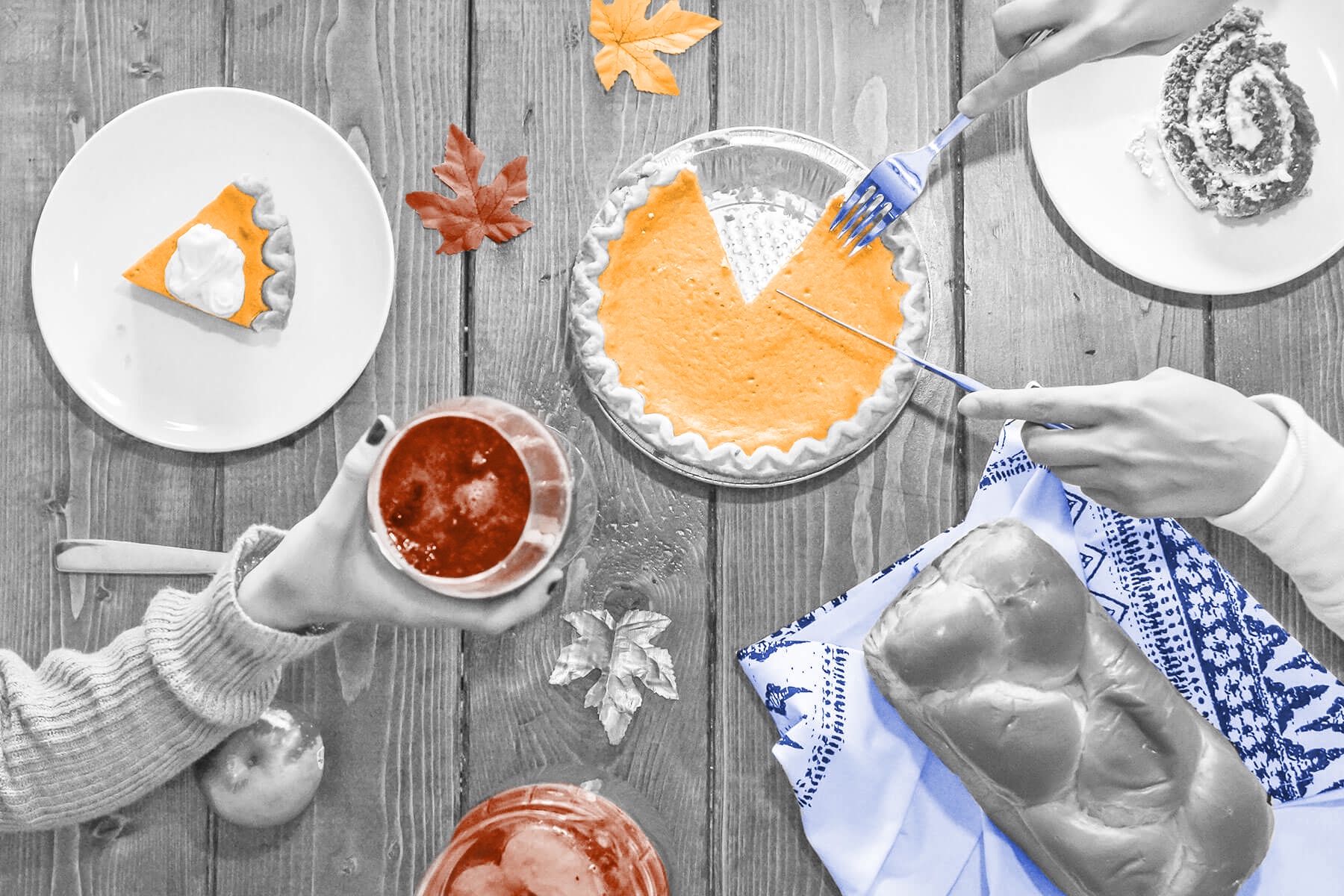

Generations of Americans have been gathering to celebrate Thanksgiving for hundreds of years, sharing holiday stories and trivia around the dinner table. However, not everything we once learned about the holiday has held up to the test of time (or further examination). Here are seven common Thanksgiving myths worth busting — and sharing — between slices of pumpkin pie.
Myth: Thanksgiving Has Been Celebrated Since the 1600s

Americans haven’t continuously celebrated Thanksgiving since its first iteration in 1621. In fact, there are few surviving details of the earliest Thanksgiving celebration; according to some historians, that’s because colonists didn’t view the meal as a new tradition. While Thanksgiving-like events occasionally occurred in the century after, it wasn’t until 1789 that George Washington began the trend of Presidents declaring official days of autumnal celebration. Even then, Thanksgiving didn't become a national holiday until 1863, when a campaign for its recognition was supported by President Abraham Lincoln.
Myth: Colonists Who Arrived on the Mayflower Were Called Pilgrims

“Pilgrim” is the term we commonly use today to refer to the European settlers who ventured across the Atlantic, though that’s not what passengers on the Mayflower went by. Those who boarded the ship to start a new life in North America referred to themselves as “saints” or “separatists” because of their division from the Church of England. Later on, the colonists would be called “first-comers” or “forefathers,” until around 1800, when the term “pilgrim” emerged, and stuck.
Myth: Pumpkin Pie Was Served at the First Thanksgiving

Pumpkin pie is synonymous with Thanksgiving, though the earliest celebrations likely didn’t include the custardy confection. Initially, the colonial settlement in Plymouth, Massachusetts, lacked an oven, making it difficult to bake such a dish. Many historians point out that the colonists also lacked the sweeteners needed to create desserts like pie or cranberry sauce. Those weren’t the only foods lacking, however; potato dishes were also absent, and it’s possible venison, not turkey, was served as the centerpiece dish.
Myth: Thanksgiving Has Always Been Held in November

The earliest national observances of Thanksgiving didn’t follow a pattern; instead of occurring on a predictable date, the timing of the holiday was left up to the President. As noted above, George Washington was the first President to acknowledge Thanksgiving, designating Thursday, November 26, 1789, as a day of prayer and gratitude. However, Thomas Jefferson refused to declare a date, citing a conflict of church and state. And in 1815, fourth President James Madison set Thanksgiving for April of that year. While November celebrations were typical, Thanksgiving didn’t get its official designation as the fourth Thursday of the month until 1941.
Myth: Abraham Lincoln Began the Turkey-Pardoning Tradition

Tad Lincoln, the youngest son of Abraham and Mary Todd Lincoln, had a soft spot for animals, including a turkey meant to be the family’s Christmas dinner in 1863. Tad successfully argued against eating the bird, and instead kept the turkey as a pet, jump-starting the misconception that Lincoln was the first President to pardon a turkey for Thanksgiving. American Presidents have received live turkeys as holiday tokens since the 1870s, and many ended up served on platters instead of spending their remaining days on a farm. Turkey pardons happened sporadically, but it wasn’t until 1989 (with President George H.W. Bush at the country’s helm) that such pardoning became a formal tradition.
Myth: Sweet Potatoes and Yams Are the Same Food

While both sweet potatoes and yams are associated with Thanksgiving, the two tubers aren't the same — biologically, they’re not even related. These root crops have noticeable differences: Yams are larger, with a darker exterior that feels rough to the touch, like tree bark. Sweet potatoes are typically smaller, with a smoother skin. When it comes to their inner contents, yams have more starch and are drier than sweet potatoes, and are typically not as sweet. In fact, most “yams” sold in the U.S. are just mislabeled sweet potatoes.
Myth: Only Americans Celebrate Thanksgiving

Thanksgiving is one of America’s oldest traditions, though Americans aren’t the only ones who celebrate a harvest season holiday. Canadians have long observed their own Thanksgiving, dating back to 1578 when explorer Sir Martin Frobisher set sail from England in an attempt to discover the Northwest Passage. To honor the safe journey, Frobisher and crew had a feast of meager rations — biscuits, salt beef, and peas. The date became an official holiday three centuries later, in 1879. Outside of North America, Thanksgiving celebrations can also be found in Liberia, Grenada, and select regions of the Netherlands and Australia.
